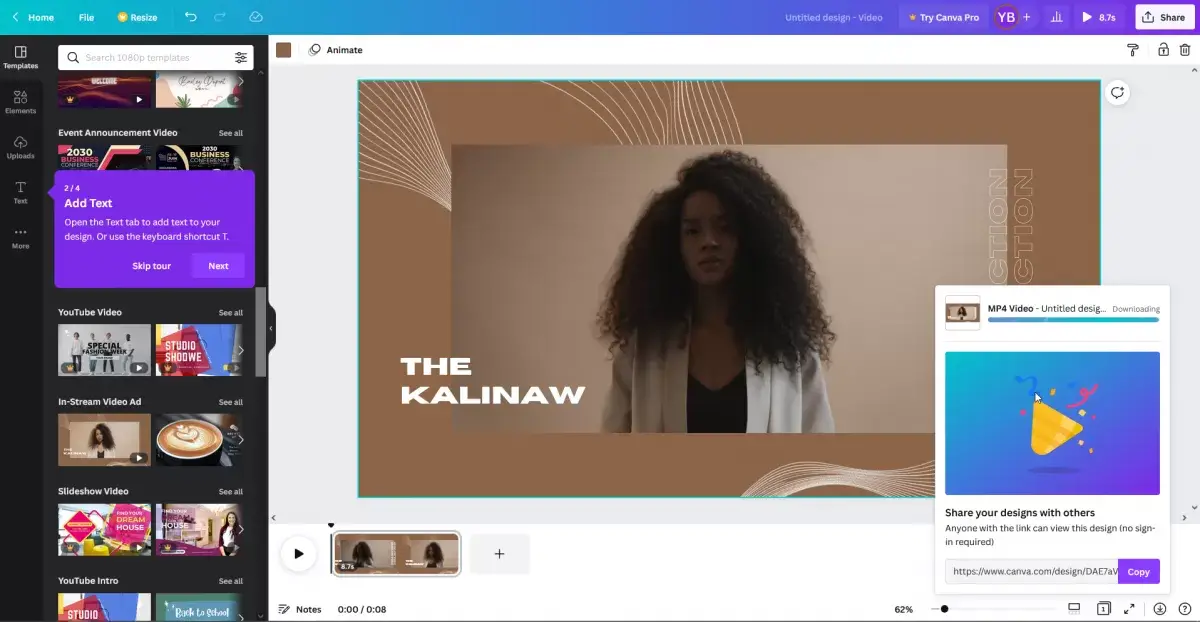Kanva eller Piktochart: Battle of the Best
Efterfrågan på gratis onlinesidor och applikationer för fotoredigering är nu på en högsta tid. Studenter, lärare, proffs och till och med frilansare letar efter det perfekta verktyget där de kan visa upp sina grafiska designtalanger som inte kommer att bryta sina banker. Eftersom alla huvudsakligen är på internet nuförtiden och billigare bärbara datorer som Chrome -böcker långsamt tar upp marknaden, beaktas en online -applikation eftersom den inte kommer att kräva höga grafiska specifikationer och ingen installation behövs. Du behöver bara en webbläsare för att skapa ett projekt. För att inte nämna, du kan komma åt dessa applikationer bara genom att använda din smartphone eller ditt bord. Hur bekvämt är det?
Idag kommer vi att kolla in två av den ledande visuella berättaren och grafiska plattformen på webben - Piktochart och Kanva. Båda är online -applikationer och är byggda för samma syfte, men vissa funktioner skiljer sig från varandra, men vissa är lika, till exempel förmågan att skärmrekord gratis.
Piktochart
Let’s start with Piktochart – a powerful and easy-to-use online tool that allows anyone to create infographics, from flyers, slides, reports, or posters (read our full Piktochart review). Once you registered with Piktochart, you can use the tool right away with your browser and start on those projects. The output of Piktochart can be printed and used digitally since it is aimed for professional use. Many small to medium business owners are opting to use this tool for their marketing and branding strategies instead of buying licenses of some known graphic software such as Photoshop. You don’t need a degree in graphic design to use Piktochart as it will only take a moment to create striking projects. Templates are available for use and even though some of them are for paying customers, you can still fully customize some. Piktochart is aimed for professionals so they can use the tool in their various campaigns and projects. Piktochart comes with a free license and upgraded access versions are also available on their website. You can start by using the available templates on the tool or you can start from scratch. Shapes, fonts, and different graphics are available on the left side of your screen.
Kanva
Kanva on the other hand is an extremely powerful tool, too, which has all the basic features of Piktochart. It is also a free graphic design platform. You can upload your pictures for your reference when you’re using the tool. You can also use its massive library for graphic materials. It also features a toolbox on the left part of the tool which houses all the things you need to start your art. Kanva is home to professionally designed templates, too. Their design templates include Zoom backgrounds, collages, bookmarks, menus, invitations, resumes, or infographic business cards. Kanva is like having a very light version of Photoshop. The big difference is that this is free, does not require extensive knowledge of tool navigation, as well as the demand for high computer specifications is not an option before you can start with your projects. Kanva also has a photo editing feature that you can use without going out of your browser. Kanva has a mobile app that can be installed on your smartphones such as Android or IOS.
In conclusion: Piktochart or Kanva?
Both Piktochart and Kanva can be used using a free license, but there is also a paid license that unlocks its features that are not available for basic users.
Now that we have talked about the cool things you can do with both, let’s talk about its disadvantages. For Kanva, you’re limited to what’s available in their library. Think of it in terms of the availability of stock photos. Sometimes, you won’t have a choice and you’ll have to look somewhere else. Another is that it has some alignment concerns. Compared to some very powerful applications, you can’t align some materials perfectly with Kanva. For Piktochart, one disadvantage is that you have to pay for their upgraded version if you would like to customize your color palettes. Such limitation can make the user think if it is the perfect tool for customization. Another is that the free account of Piktochart has very limited access compared to that of Kanva. Piktochart at the moment is also not available for mobile apps, thus you only need to use a browser to access it.
När det gäller användbarhet är båda verktygen mycket utmärkta applikationer. Det finns vissa begränsningar, särskilt för gratis användare som inte kan kunna redigera videor utan vattenmärken men de kommer inte att hindra dig från att skapa de bästa designen för ditt projekt.
Vilken tror du kommer att vara användbar för dig? Kanva eller Piktochart?
Vanliga Frågor
- Vad är den bästa applikationen för att arbeta med färgpaletten?
- Om du har val mellan Piktochart och Canva, bör du vara uppmärksam på den senare. Eftersom en av nackdelarna med Piktochart är att du måste betala för deras uppgraderade version om du vill anpassa dina färgpaletter.
